Twenty-eight species of the finch family Estrildidae can be found in Rwanda. This family includes nine waxbills, named because of the waxy layers of keratin at the base of their bills. The waxbills are closely related to the pytilias, firefinches, twinspots, mannikins, nigritas, White-collared Oliveback, and Red-cheeked Cordon-bleu – which make up the rest of this family group. Both the Shelley’s Crimsonwing and Dusky Crimsonwing are Albertine rift endemic species and are best seen in the three national parks located in the west and north of the country, although the Shelley’s Crimsonwing is now extremely rare. Others like the Bronze Mannikin, Red-cheeked Cordon-bleu, and Red-billed Firefinch are regular visitors to the gardens in Rwanda’s urban areas, gardens and parks.
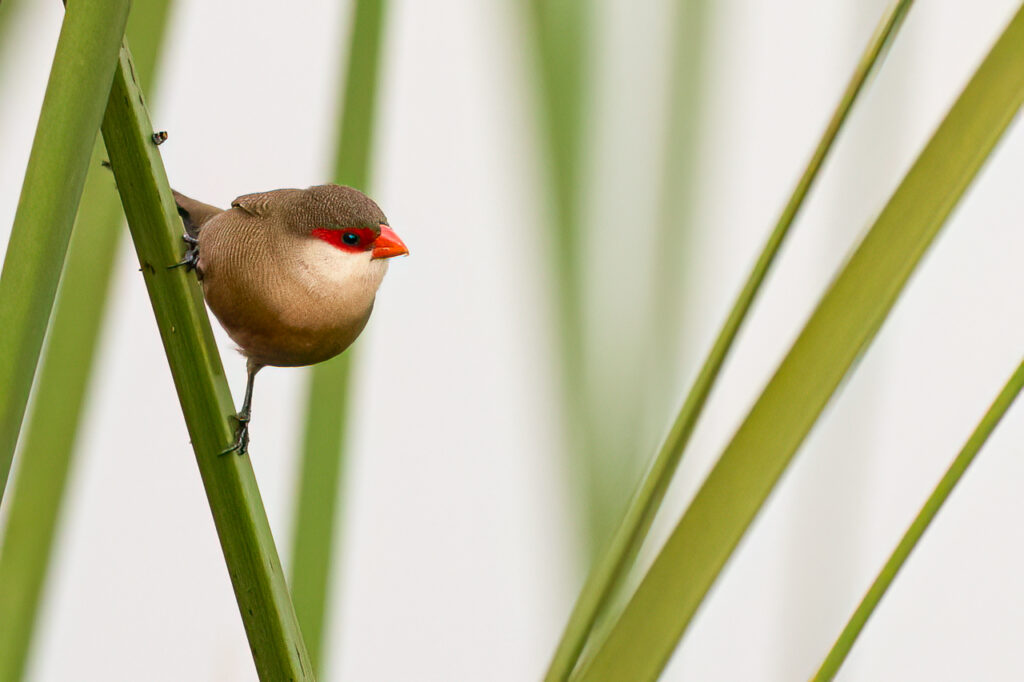
These tiny finches, measuring from as little as 9cm from the tip of the bill to the end of the tail, are well known for their striking plumage and simple songs. Some of the family are sexually dimorphic, and the males and females are easy to differentiate – Red-cheeked Cordon-bleu, Green-winged Pytilia, and the two firefinch species are great examples. The female and male of the others look very similar, if not alike! The two mannikin species and Black-crowned Waxbill show very little difference between the sexes!
This group have short and rounded wings which enables rapid flight. They also have conical bills designed to crack and husk seeds before they are swallowed. Most species will join mixed-species foraging flocks. Bronze Mannikins tend to flock together more than most of the waxbill family and prefer more wooded cover when they forage, the less common Black and White Mannikin can sometimes be found in these larger Bronze Mannikin foraging flocks.
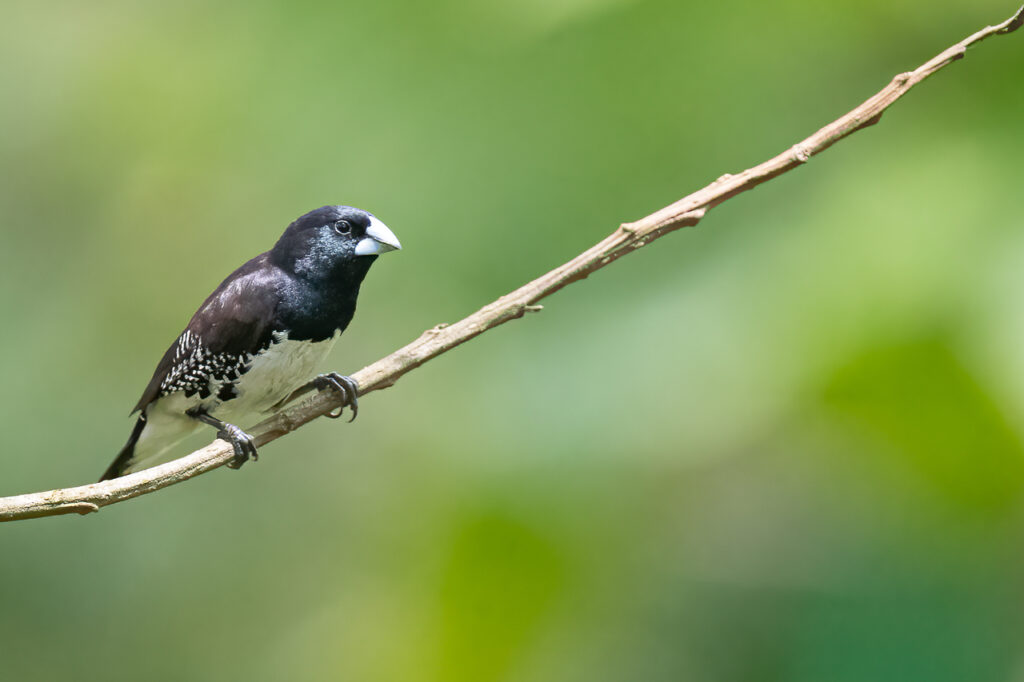
Common Waxbills can also be seen foraging in larger foraging flocks. I find it fascinating to watch these waxbills flocks in action. I have noticed they will often land on the upper part of long grass stalks, the weight of the bird bends the stalk down, their toes and claws gripping the stalk strips the seeds as it flips back up! They spend a lot of their time foraging on the ground, flying up to the safety of a tree canopy when disturbed. During their breeding seasons most will also eat insects for the added protein. Green-winged Pytilias are omnivores and will take small items of plant and animal matter directly from the ground throughout the year.
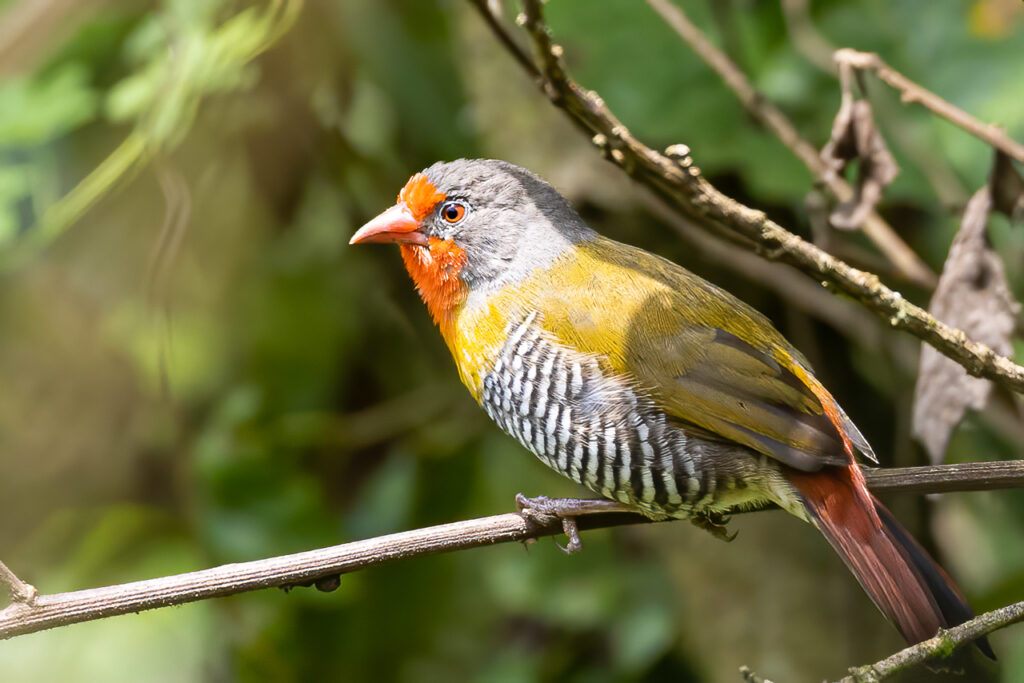
Courtship displays are common with this group and involve the male presenting nesting material to the female whilst wagging their tail back and forth. Long term pair bonds are usual for many species and they are socially monogamous. Allopreening is also common between partners which helps to strengthen pair bonds. Some also huddle close to each other when roosting – a great way to share body warmth. While most of this family construct ball-shaped nests from twigs in bushes or the canopy of trees, White-collared Olivebacks will take over and reuse abandoned Spectacled Weaver nests. I’ve seen this behaviour at Nyandungu Eco-Park and Umusambi Village, both located on the eastern outskirts of Kigali. Pin-tailed Whydahs are brood parasites found here in Rwanda and often try to use members of the waxbill family as host parents to raise their young.
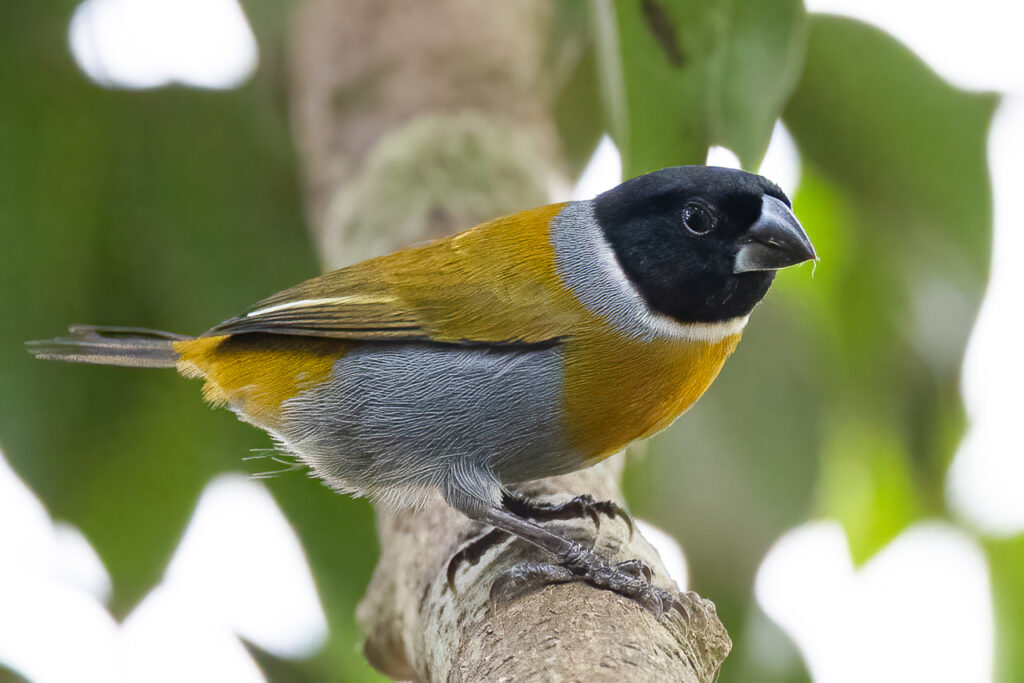
This awesome group of birds are found across Rwanda, while some are common others can be tricky to find – as they spend a lot of their time foraging on the ground don’t forget to look down!

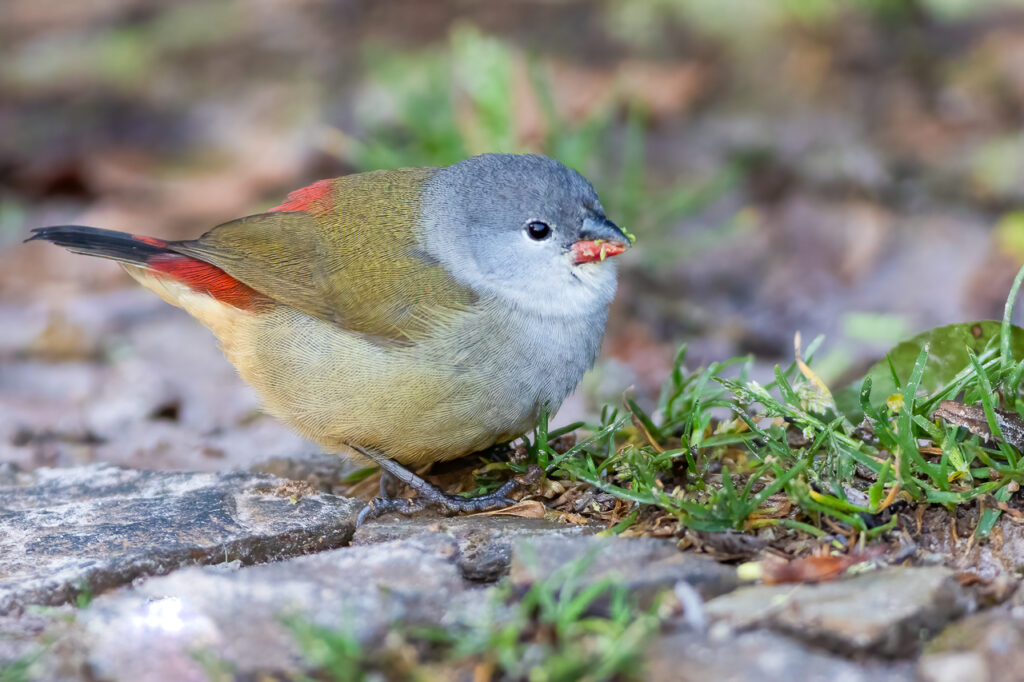
Thank you for sharing these beautiful photos and descriptions.
Glad you enjoyed it, and you’re welcome!